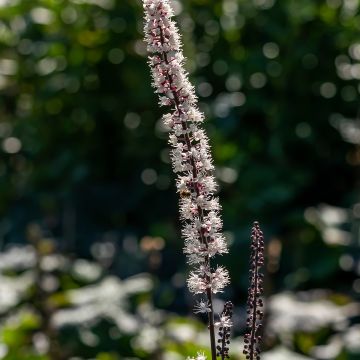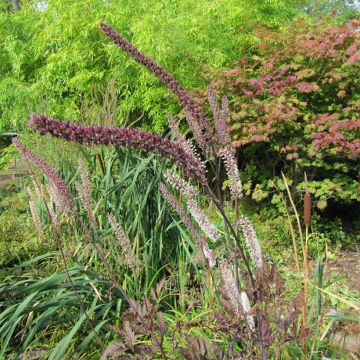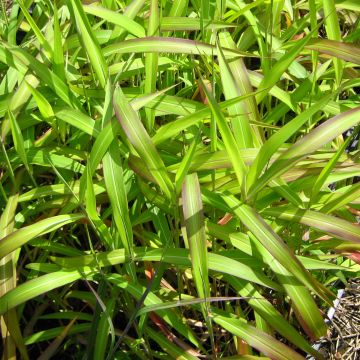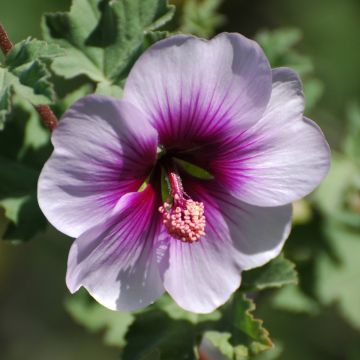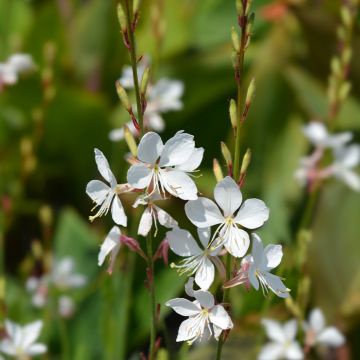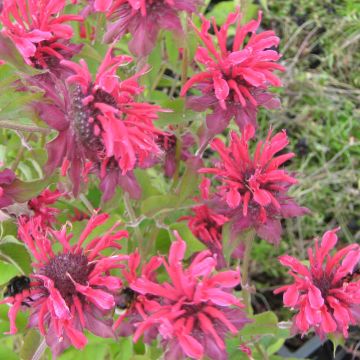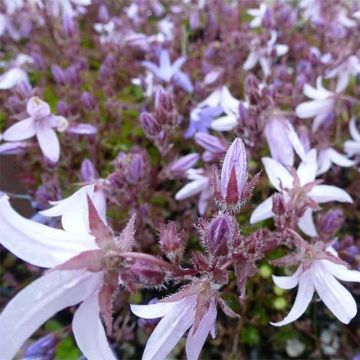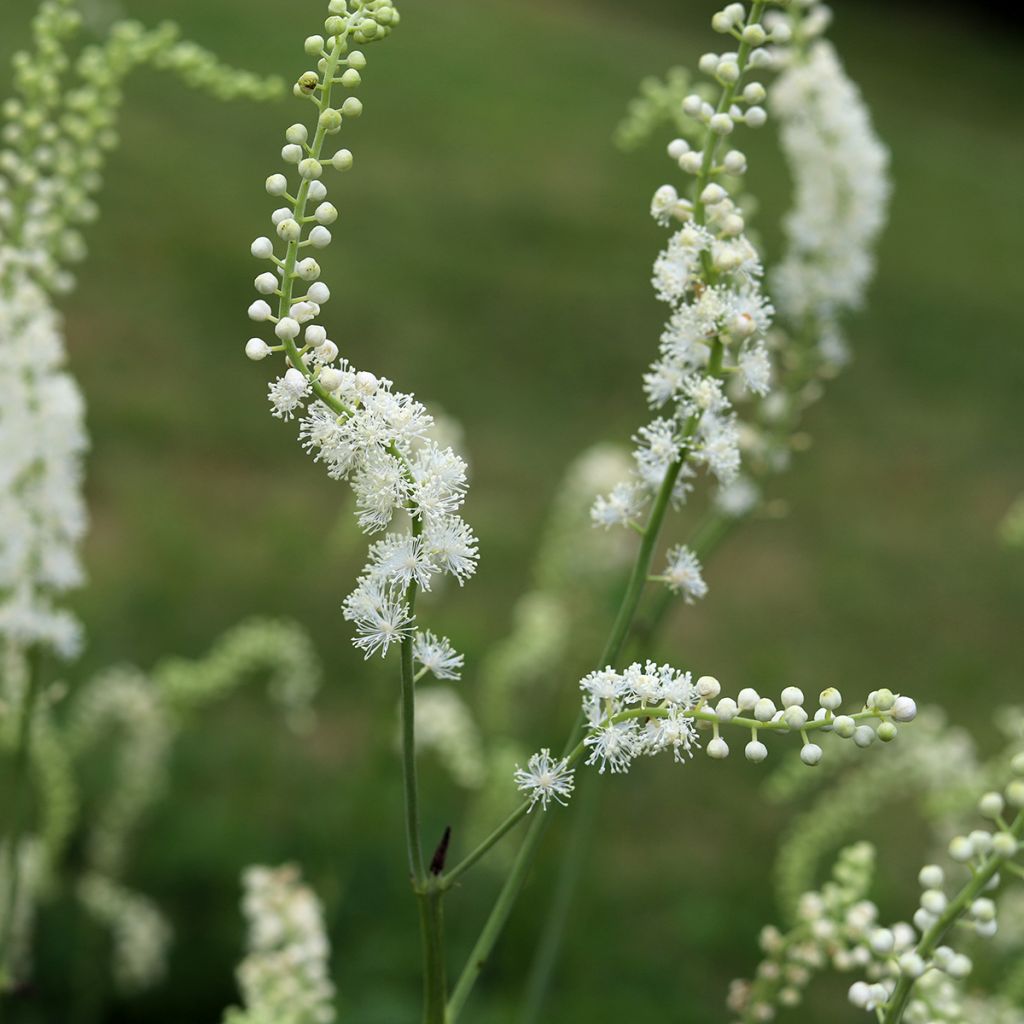

Cimicifuga dahurica
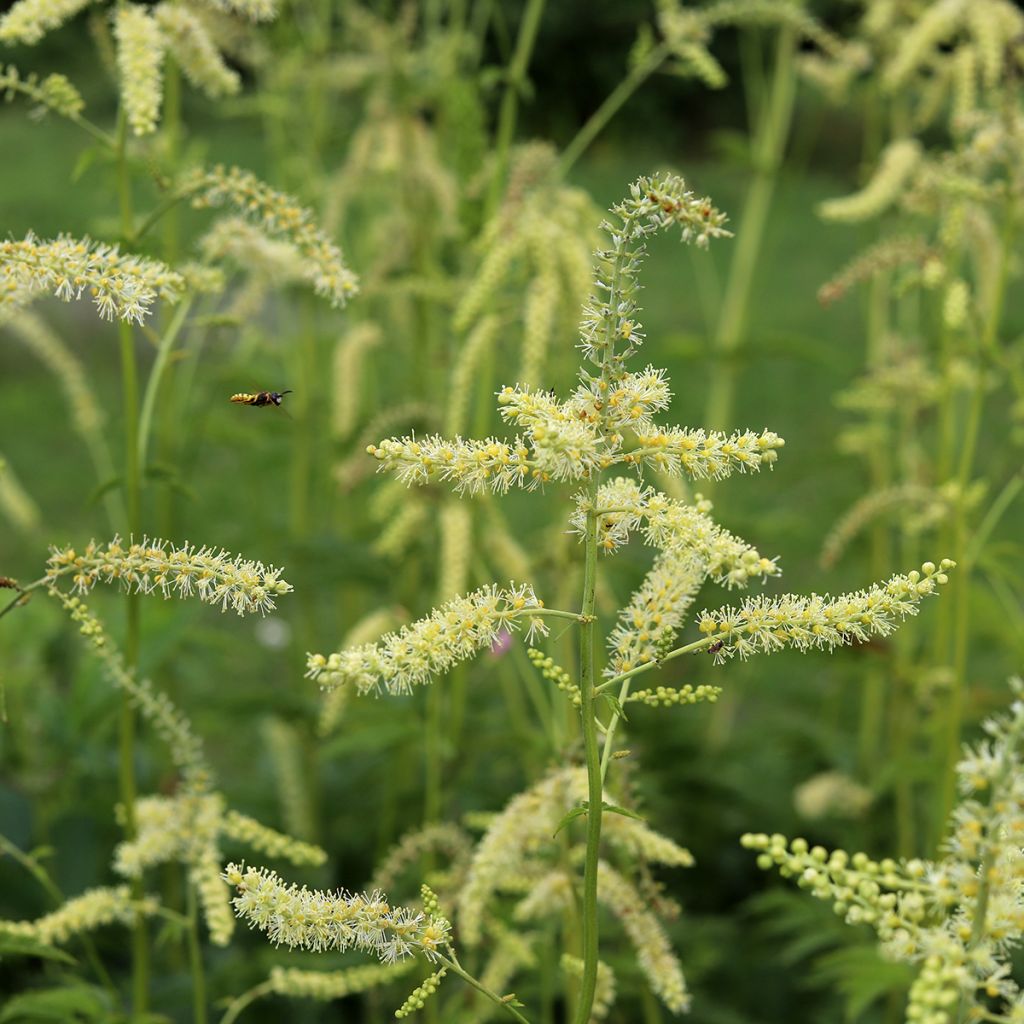

Cimicifuga dahurica


Cimicifuga dahurica
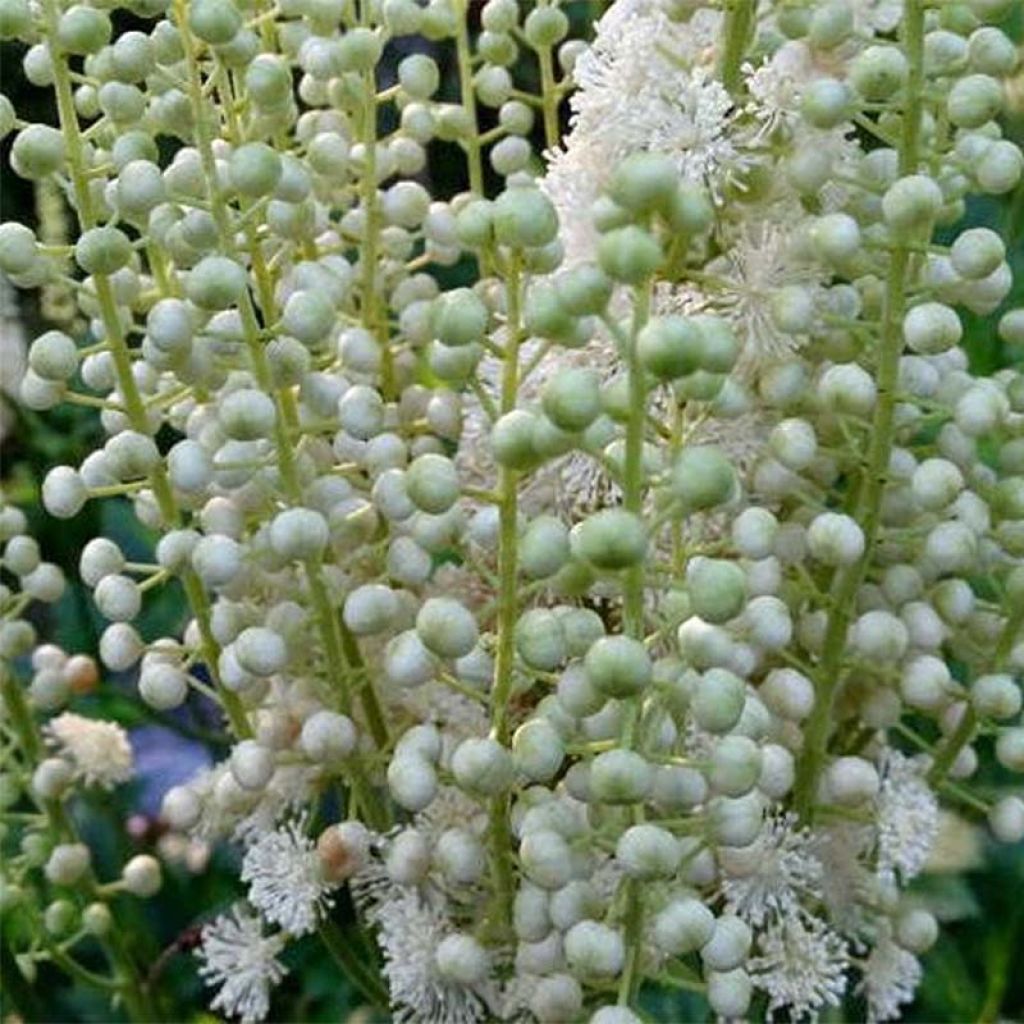

Cimicifuga dahurica
Cimicifuga dahurica
Actaea dahurica
Dahurian Baneberry, Asian Baneberry
This young plant has recovered, but has not flowered.
Yves M., 19/08/2020
Why not try an alternative variety in stock?
View all →This plant carries a 12 months recovery warranty
More information
We guarantee the quality of our plants for a full growing cycle, and will replace at our expense any plant that fails to recover under normal climatic and planting conditions.
From €5.90 for pickup delivery and €6.90 for home delivery
Express home delivery from €8.90.
Does this plant fit my garden?
Set up your Plantfit profile →
Description
Actaea or Cicimifuga dahurica is a botanical silver candle, rare in cultivation, quite similar in appearance to the Cimicigua racemosa, another species much better known to gardeners as baneberry. It is a very beautiful perennial of clear and fresh understory, both majestic in its habit, luxuriant in its foliage, and poetic in its luminous flowering in tall, slender, and branched spikes. It blooms in late summer, well above a tuft of deeply cut leaves, reminiscent of a giant Astilbe. Vigorous and hardy, this plant establishes itself slowly, but for many years. Give it a good place at the back of a border, always in partial shade and in moist soil.
Cicimifuga (formerly Actaea) dahurica is a plant of the buttercup family native to temperate Asia (Korea, Mongolia, Siberia, northern China). In the wild, it is found in thickets, forests, and high-altitude meadows, up to 1200m (3937ft). This species differs from the native North American Cimicifuga racemosa mainly in the shape of its cordate-based leaves. It is a deciduous perennial herbaceous plant, with above-ground foliage disappearing in winter. Developing from a knotty rhizome with fibrous roots arranged in compact masses, this plant slowly forms bushy clumps reaching 1m (3ft) in height for the foliage, and sometimes 2m (7ft) in flower (on average 1.75m (6ft)), with a minimum spread of 70cm. Its stems are covered with large triangular leaves, divided into 3 toothed lobes, sometimes up to 50cm (20in) long including the petiole. They are adorned with a dark green colour, sometimes tinged with purple-grey. Flowering usually starts in August, in the form of numerous large terminal and branched inflorescences in slender creamy-white spikes, upright or slightly arched, composed of tiny powder-covered flowers with indescribable fragrance. This flowering is highly attractive to bees and nectar-feeding insects, but its fragrance is not appreciated by everyone. In this baneberry species, there are both female and male plants, the latter displaying a more decorative flowering. The specific name of this plant, dahurica, refers to the eponymous region located between southeastern Siberia and northeastern Mongolia.
The Dahurian Baneberry will thrive in partial shade, in the dappled light of a clear understory or at the edge of a forest. This species tolerates the competition of tree and shrub roots quite well, as long as the soil does not dry out too much in summer. At the back of borders, its very graphic silhouette and bright flowers will create a beautiful backdrop for perennials that have finished flowering in late summer. Whether placed as an individual specimen or in small groups of 3, a background of dark foliage (conifers, holly, boxwood, osmanthus) will enhance its "silver candle" flowers. For example, you can associate it with partial shade perennial geraniums (Geranium nodosum, G. cantabrigiense, G. macrorrhizum...). This majestic plant will also make a beautiful subject when planted in a large pot on the terrace.
Report an error about the product description
Cimicifuga dahurica in pictures
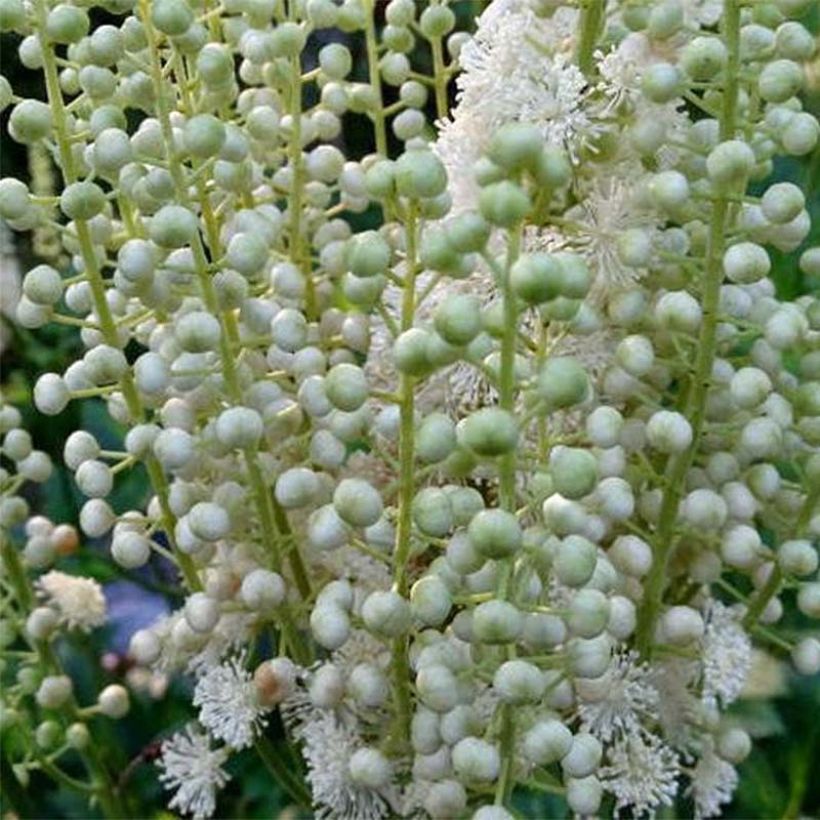

Flowering
Foliage
Plant habit
Botanical data
Actaea
dahurica
Ranunculaceae
Dahurian Baneberry, Asian Baneberry
Actinospora dahurica, Actaea pterosperma
East Asia
Other Cimicifuga
Planting and care
Cimicifuga bring a lot of personality to the garden in late summer, in the background of flower beds or in light woodland. They appreciate partial shade as well as a rich and deep, not too chalky, soil. Keep an eye on watering, especially for young plants. They generally do not need staking and require no further maintenance. Highly cold-resistant, Cimicifuga dahurica will find a place in any fertile and moist to occasionally dry in summer, but deep, soil.
Planting period
Intended location
Care
-
, onOrder confirmed
Reply from on Promesse de fleurs
Summer flowering perennials
Haven't found what you were looking for?
Hardiness is the lowest winter temperature a plant can endure without suffering serious damage or even dying. However, hardiness is affected by location (a sheltered area, such as a patio), protection (winter cover) and soil type (hardiness is improved by well-drained soil).

Photo Sharing Terms & Conditions
In order to encourage gardeners to interact and share their experiences, Promesse de fleurs offers various media enabling content to be uploaded onto its Site - in particular via the ‘Photo sharing’ module.
The User agrees to refrain from:
- Posting any content that is illegal, prejudicial, insulting, racist, inciteful to hatred, revisionist, contrary to public decency, that infringes on privacy or on the privacy rights of third parties, in particular the publicity rights of persons and goods, intellectual property rights, or the right to privacy.
- Submitting content on behalf of a third party;
- Impersonate the identity of a third party and/or publish any personal information about a third party;
In general, the User undertakes to refrain from any unethical behaviour.
All Content (in particular text, comments, files, images, photos, videos, creative works, etc.), which may be subject to property or intellectual property rights, image or other private rights, shall remain the property of the User, subject to the limited rights granted by the terms of the licence granted by Promesse de fleurs as stated below. Users are at liberty to publish or not to publish such Content on the Site, notably via the ‘Photo Sharing’ facility, and accept that this Content shall be made public and freely accessible, notably on the Internet.
Users further acknowledge, undertake to have ,and guarantee that they hold all necessary rights and permissions to publish such material on the Site, in particular with regard to the legislation in force pertaining to any privacy, property, intellectual property, image, or contractual rights, or rights of any other nature. By publishing such Content on the Site, Users acknowledge accepting full liability as publishers of the Content within the meaning of the law, and grant Promesse de fleurs, free of charge, an inclusive, worldwide licence for the said Content for the entire duration of its publication, including all reproduction, representation, up/downloading, displaying, performing, transmission, and storage rights.
Users also grant permission for their name to be linked to the Content and accept that this link may not always be made available.
By engaging in posting material, Users consent to their Content becoming automatically accessible on the Internet, in particular on other sites and/or blogs and/or web pages of the Promesse de fleurs site, including in particular social pages and the Promesse de fleurs catalogue.
Users may secure the removal of entrusted content free of charge by issuing a simple request via our contact form.
The flowering period indicated on our website applies to countries and regions located in USDA zone 8 (France, the United Kingdom, Ireland, the Netherlands, etc.)
It will vary according to where you live:
- In zones 9 to 10 (Italy, Spain, Greece, etc.), flowering will occur about 2 to 4 weeks earlier.
- In zones 6 to 7 (Germany, Poland, Slovenia, and lower mountainous regions), flowering will be delayed by 2 to 3 weeks.
- In zone 5 (Central Europe, Scandinavia), blooming will be delayed by 3 to 5 weeks.
In temperate climates, pruning of spring-flowering shrubs (forsythia, spireas, etc.) should be done just after flowering.
Pruning of summer-flowering shrubs (Indian Lilac, Perovskia, etc.) can be done in winter or spring.
In cold regions as well as with frost-sensitive plants, avoid pruning too early when severe frosts may still occur.
The planting period indicated on our website applies to countries and regions located in USDA zone 8 (France, United Kingdom, Ireland, Netherlands).
It will vary according to where you live:
- In Mediterranean zones (Marseille, Madrid, Milan, etc.), autumn and winter are the best planting periods.
- In continental zones (Strasbourg, Munich, Vienna, etc.), delay planting by 2 to 3 weeks in spring and bring it forward by 2 to 4 weeks in autumn.
- In mountainous regions (the Alps, Pyrenees, Carpathians, etc.), it is best to plant in late spring (May-June) or late summer (August-September).
The harvesting period indicated on our website applies to countries and regions in USDA zone 8 (France, England, Ireland, the Netherlands).
In colder areas (Scandinavia, Poland, Austria...) fruit and vegetable harvests are likely to be delayed by 3-4 weeks.
In warmer areas (Italy, Spain, Greece, etc.), harvesting will probably take place earlier, depending on weather conditions.
The sowing periods indicated on our website apply to countries and regions within USDA Zone 8 (France, UK, Ireland, Netherlands).
In colder areas (Scandinavia, Poland, Austria...), delay any outdoor sowing by 3-4 weeks, or sow under glass.
In warmer climes (Italy, Spain, Greece, etc.), bring outdoor sowing forward by a few weeks.



































